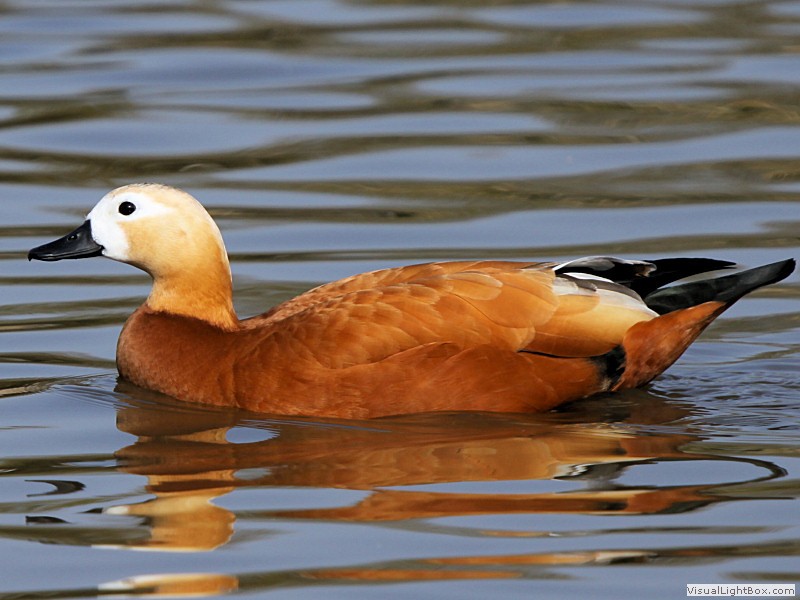Ruddy shelduck: Red Data Book of Armenia

Ducks, geese and swans — Anatidae
Status. In the past, it was a widespread and common species. Now, its population tends to decrease. Listed in the IUCN Red List of Threatened Species (ver. 3.1) as Least Concern. According to IUCN criteria categorized as Vulnerable VU B1ab(iii)+2ab(iii).
Distribution. North Africa, Balkan Peninsula, Asia Minor, South Caucasus, Iraq, Iran, Russia, Central Asia, Afghanistan, China, Himalayas.
Distribution in Armenia. Occurs in the Lake Sevan basin, on Lake Arpi and the reservoirs of Akhurian, Kechut, Spandarian, Aparan and Hrazdan, on upland lakes and in wetlands of the Ararat Valley. Also found on the Mt. Aragats (at 3200 m above sea level), Geghama, Vardenis and Sevan ridges.
Habitats. After breeding the preference is given to open water bodies deprived of riparian vegetation. During migrations it feeds on cereal crop fields and on wetlands in the Ararat Valley. In winter occurs in the Arax riverside.
Biological traits. Nestles in May in tree hollows, fox and badger dens, and in artificial shelters. The nest is a simple non–fledged hole. Eggs are creamy, 8–12/clutch, size 60–67 mm. Sometimes several females lay eggs in the same nest, giving a total clutch of up to 50 eggs. The brooding period is 27–29 days. Hatchlings are very agile and can follow their parents. Full development of hatchlings lasts ca. 2 months. Fledglings are very skilful in swimming and diving. Shelducks have a habit of fightingly taking away the other parents’ broods and gathering them around.
Population size and its trends. In the nesting season the number can reach 250–1000 pairs, up to 1000–2500 in winter. The population increases during migrations. Current abundance is 500–1000 individuals. The population tends to decrease during the nesting, migration and wintering seasons.
Major threats. A significant portion of nesting grounds in the Lake Sevan environs was lost because of water subsidence. Winter freezing of this lake is another adverse factor. On the Lake Arpi, fishing and poaching are serious threats during the nesting season.
Conservation measures. Protected in Sevan National Park and Lake Arpi National Park. Communities living near national parks are involved in awareness–raising. It is essential to estimate population size throughout a year, identify suitable nesting sites and ensure their preservation, strengthen anti–poaching activities during migrations and wintering and to declare the Armash fish ponds an Important Bird Area.
Suggestions
 The Ministry of Environment sent a letter international partners to draw their attention to the real danger of environmental disasters as a result of Azerbaijan's large-scale aggression towards the territory of Armenia
The Ministry of Environment sent a letter international partners to draw their attention to the real danger of environmental disasters as a result of Azerbaijan's large-scale aggression towards the territory of Armenia
 Vicia pisiformis: Red Data Book of Armenia
Vicia pisiformis: Red Data Book of Armenia
 Vavilovia formosa: Red Data Book of Armenia
Vavilovia formosa: Red Data Book of Armenia
 Trigonella capitata: Red Data Book of Armenia
Trigonella capitata: Red Data Book of Armenia
 Trigonella astroides: Red Data Book of Armenia
Trigonella astroides: Red Data Book of Armenia












